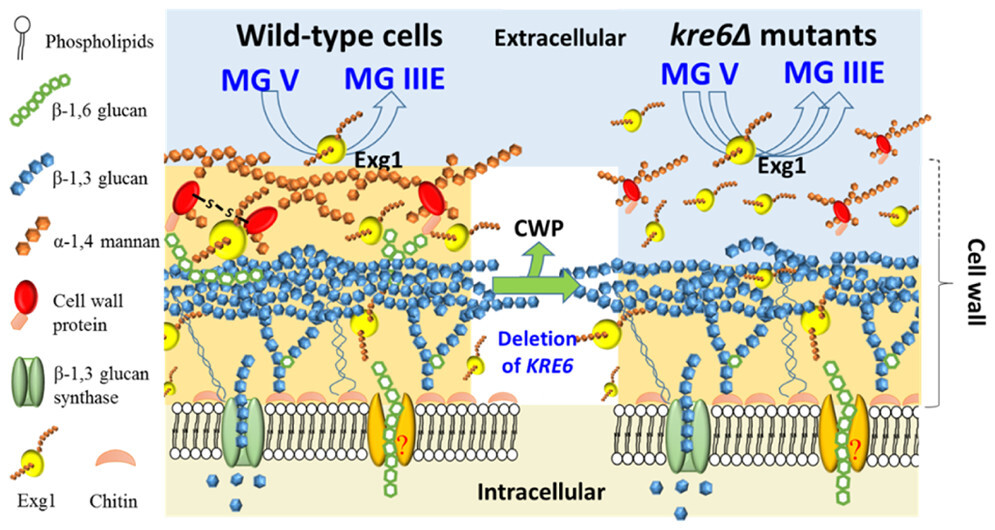Hyperproduction of β-Glucanase Exg1 Promotes the Bioconversion of Mogrosides in Saccharomyces cerevisiae Mutants Defective in Mannoprotein Deposition

圖文摘要說明
示意圖比較野生型與 kre6Δ 突變酵母細胞的細胞壁和胞外酶分泌。kre6Δ 突變體因 KRE6 缺失導致甘露蛋白沉積缺陷,使 Exg1 酶大量釋放至細胞外,促進莫苷 V 轉化為莫苷 III E。說明甘露蛋白缺陷酵母可用於轉化糖基化合物。
Abstract
Bacteria and fungi can secrete extracellular enzymes to convert macromolecules into smaller units. Hyperproduction of extracellular enzymes is often associated with alterations in cell wall structure in fungi. Recently, we identified that Saccharomyces cerevisiaekre6Δ mutants can efficiently convert mogroside V into mogroside III E, which has antidiabetic properties. However, the underlying efficient bioconversion mechanism is unclear. In the present study, the mogroside (MG) bioconversion properties of several cell wall structure defective mutants were analyzed. We also compared the cell walls of these mutants by transmission electron microscopy, a zymolyase sensitivity test, and a mannoprotein release assay. We found zymolyase-sensitive mutants (including kre1Δ, las21Δ, gas1Δ, and kre6Δ), with defects in mannoprotein deposition, exhibit efficient MG conversion and excessive leakage of Exg1; such defects were not observed in wild-type cells, or mutants with abnormal levels of glucans in the cell wall. Thus, yeast mutants defective in mannoprotein deposition may be employed to convert glycosylated bioactive compounds.
Keywords:bioconversion; EXG1; KRE6; mannoprotein; mogrosides; Saccharomyces cerevisiae

